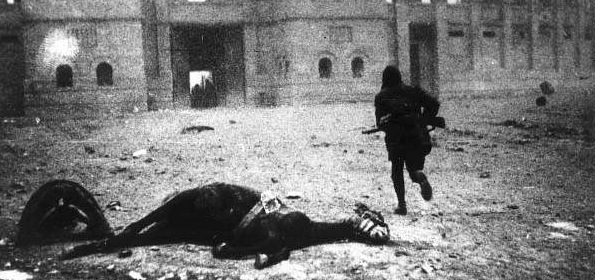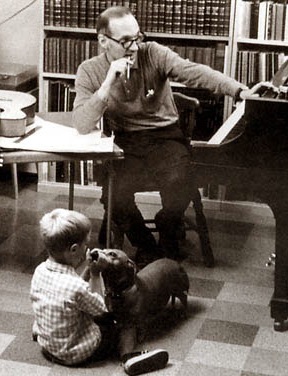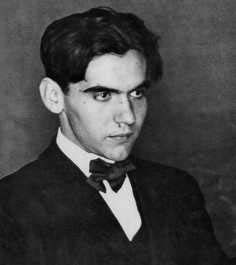George Crumb: Todas las Tardes from Ancient Voices of Children (1970)
The composer's website.Interview with the Composer


 |
History George Crumb was born in West Virginia in 1929. Since his earleist compositions, he has created a singular world rooted in the spiritual and symbolic qualities of sound. His works are notable for their subtle and attractive use of extended instrumental techniques, exquisite and unorthodox scores and almost naive directness. In the late 1960s he produced a number of influential works: Black Angles for amplified String Quartet; Vox Balanae for a masked ensemble of flute, cello and piano; and Ancient Voices of Children. Before retiring, he taught for many years at the University of Pennsylvania. Since 2003, he has focused his energies on several exquisite large song cycles, setting American folk song. Like many of Crumb's works, Ancient Voices of Children sets fragments of texts by Federico Garcia Lorca, the Spanish poet murdered at the beginning of the Spanish Civil War. Crumb writes: "In Ancient Voices of Children, I have sought musical images that enhance and reinforce the powerful, yet strangely haunting imagery of Lorca's poetry. I feel that the essential meaning of this poetry is conerned with the most primary things: life, death, love, the smell of the earth, the sounds of the wind and the sea. These "ur-concepts" are embodied ina language which is primitive and stark, but which is capable of infinitely subtle nuance. ... The vocal style of the cycle ranges from the virtuosic to the intimately lyrical... Perhaps the most characteristic vocal effect [in the cycle] is produced by the mezzo-soprano singing a kind of fantastic vocalise into an amplified piano, thereby producing a shimmering aura of echoes... The instruments employed in Ancient Voces were chosen for their particular timbral potentialities. The pianist also plays toy piano, the mandolinist musical saw, and the oboist harmonica. Certain special instrumental effects are used to heighten the "expressive intensity" - e.g. "bending" the pitch of the piano by application of a chisel to the strings; use of a paper-threaded harp; the frequent "pitch-bending" of the oboe, harp and mandolin. " Things to Note Crumb is never one to shy away from the symbolic power of a particular timbre or the dramatic qualitiy of players doing unorthodox things or using their instruments in ways they may not have been trained to do. Thus, in this movement, the percussionists are asked to become an ersatz choir (singing vowel vocalizations at the beginning), and the oboist is asked to play harmonica. While Crumb's sound is almost cinematic he stresses that the timbres are not "sound effects" but an integral part of the musical expression. The work quotes "Bist du Bei Mir" ("Be Thou With Me"), an aria by the composer Stolzel that JS Bach included in a colleciton of pieces for his daughter known as The Notebook for Anna Magdalena Bach |
|
Todas las tardes en Granada, todas las tardes se muere un niņo |
Each afternoon in Granada each afternoon a child dies. |
 Federico Garcia Lorca |
Listening Chart
|